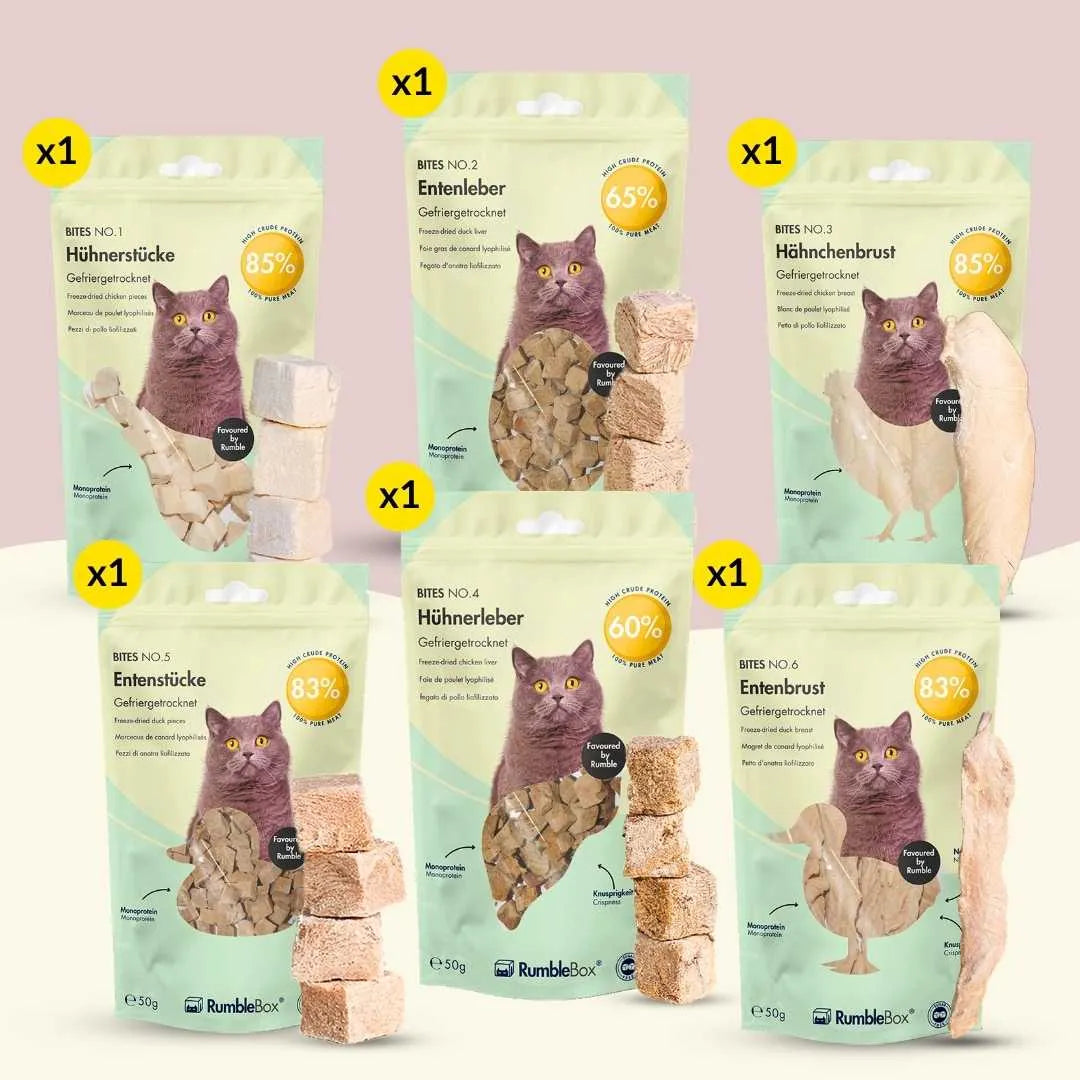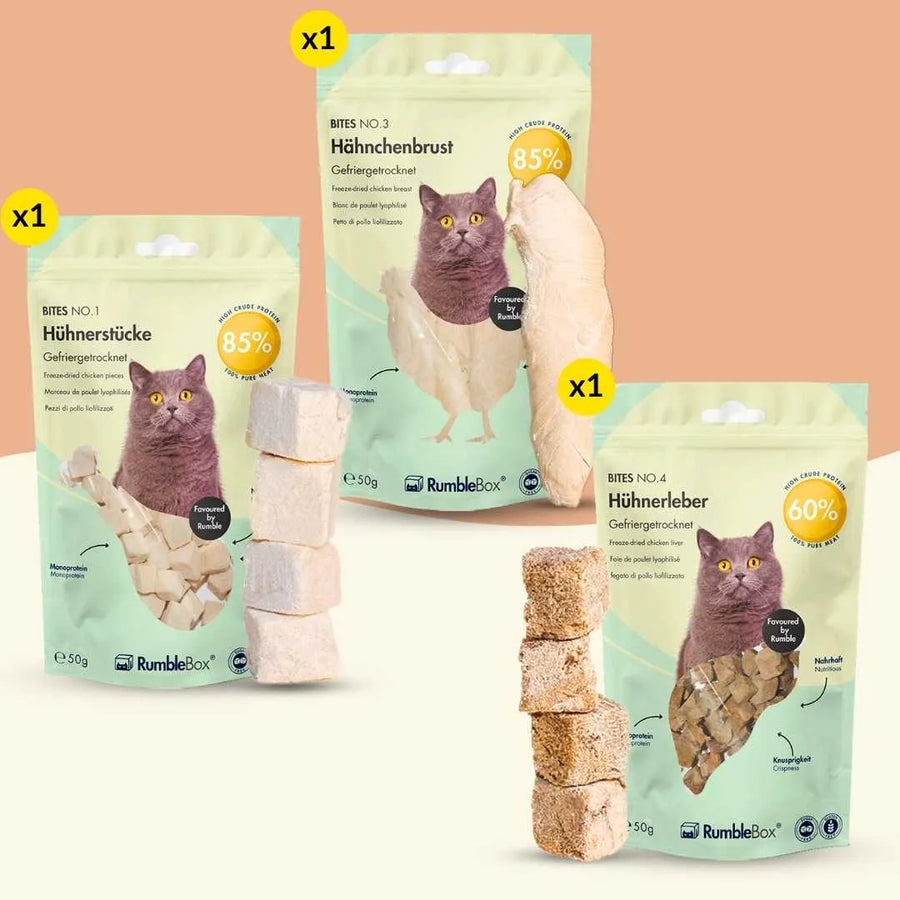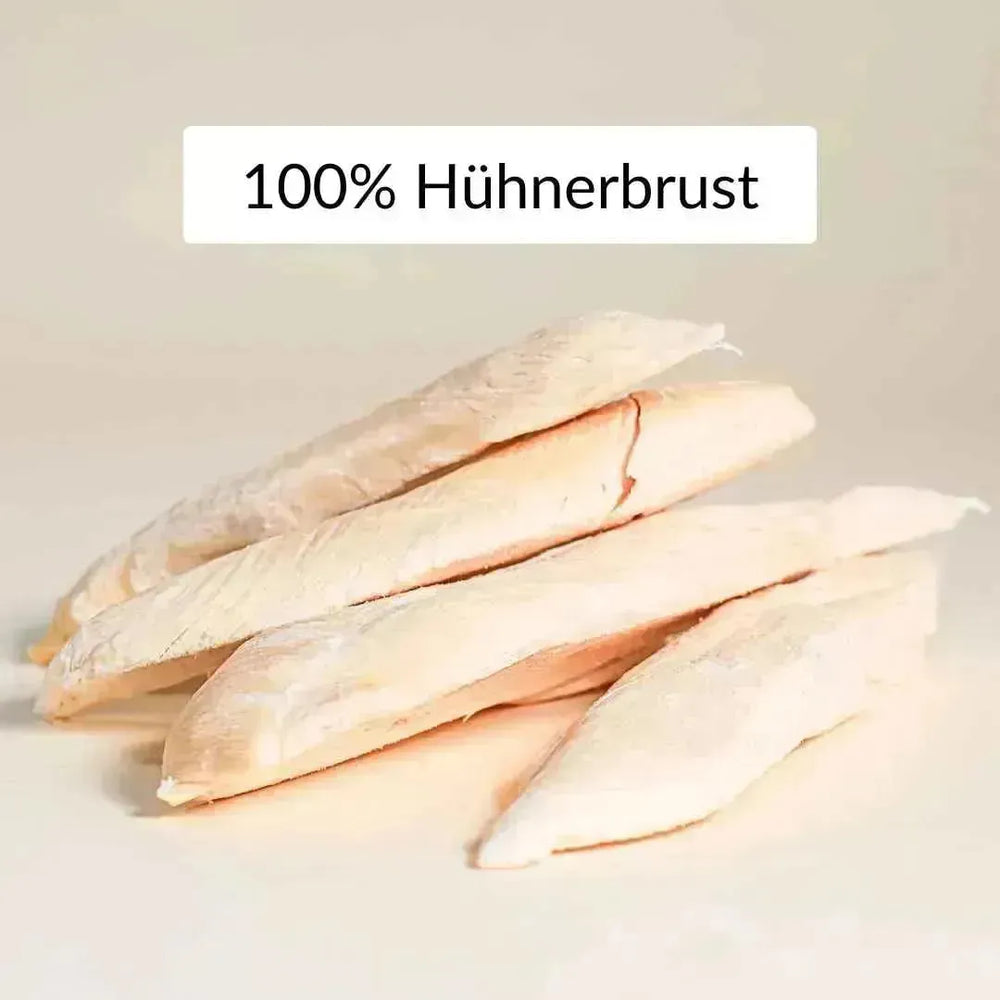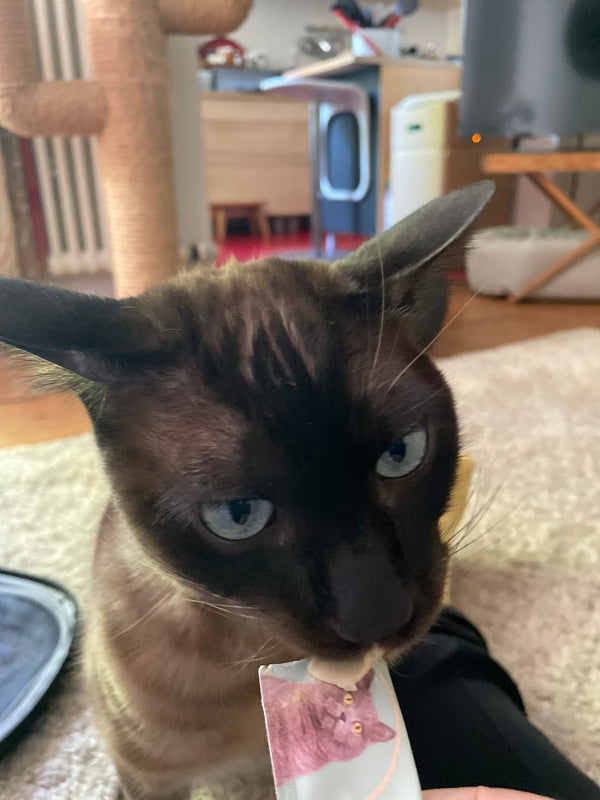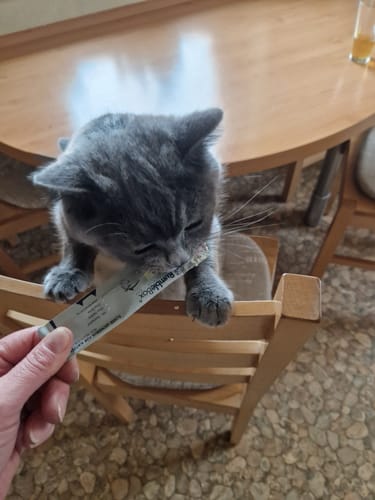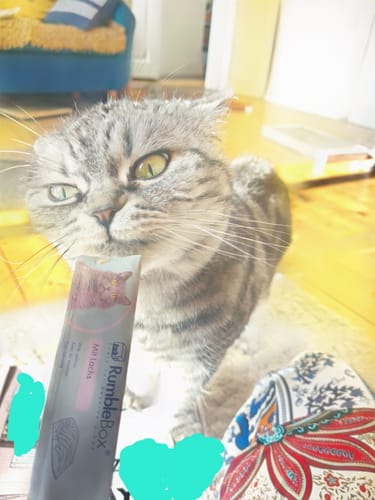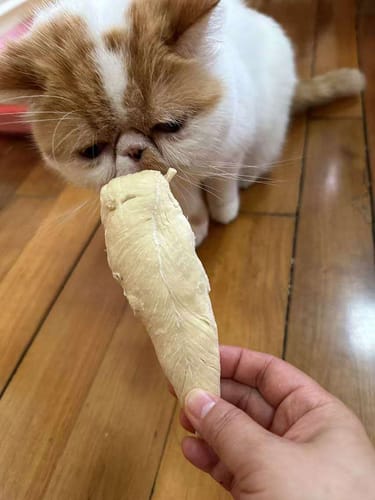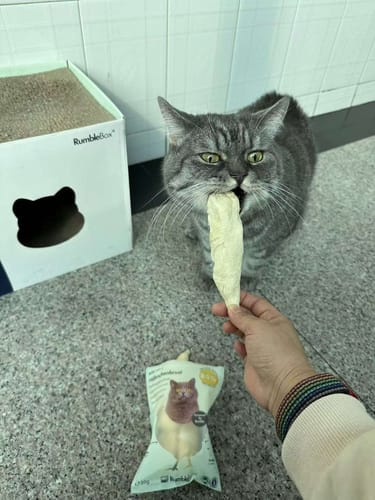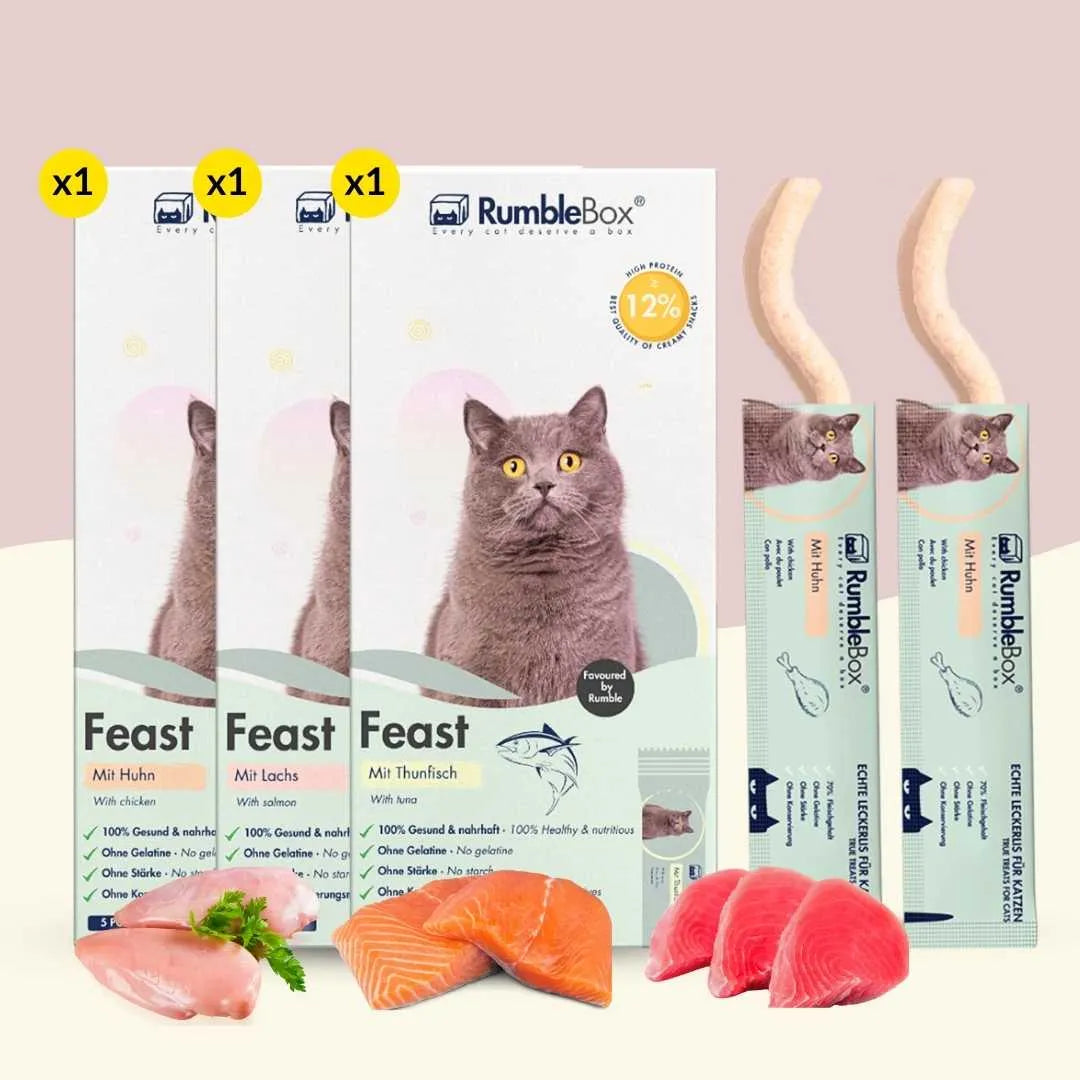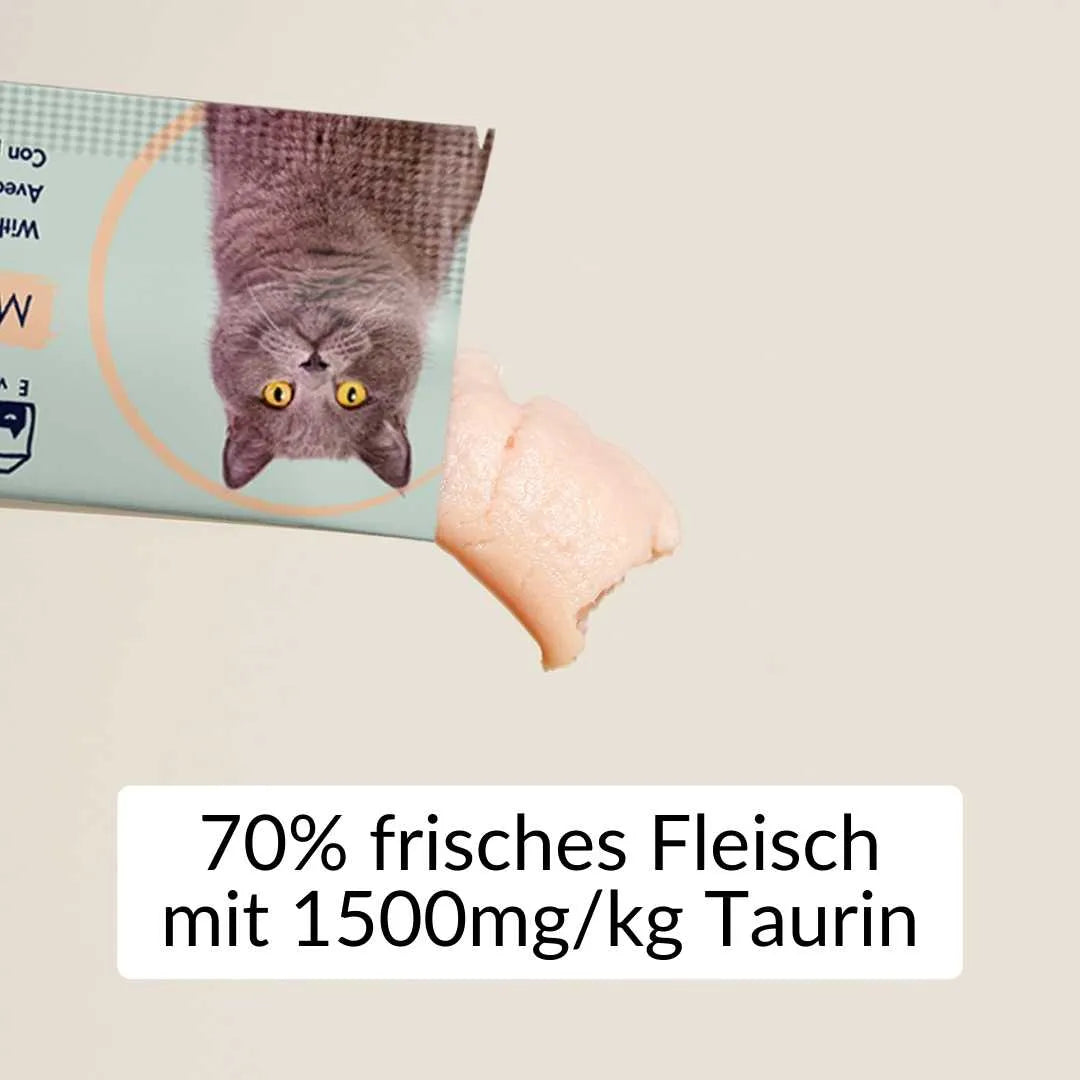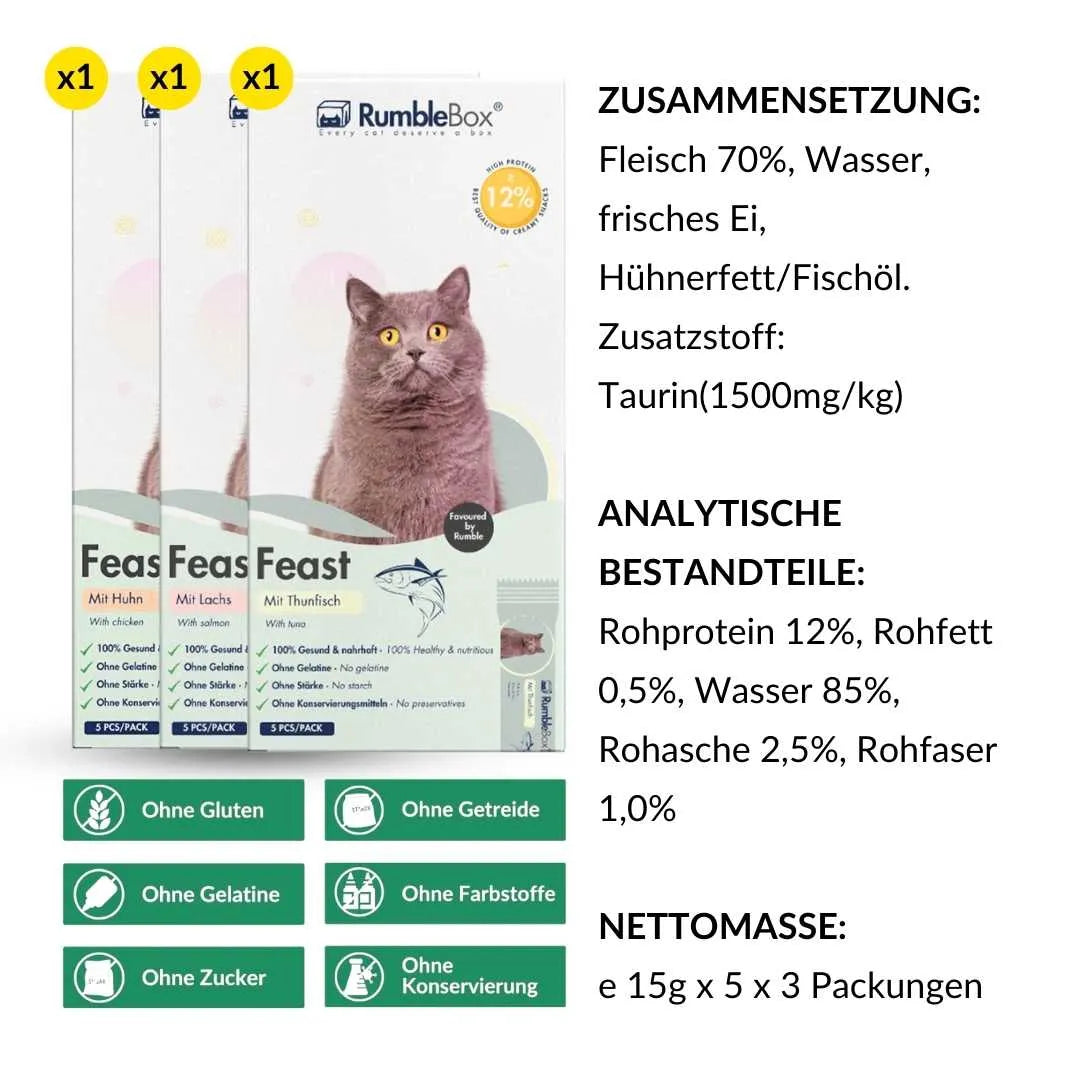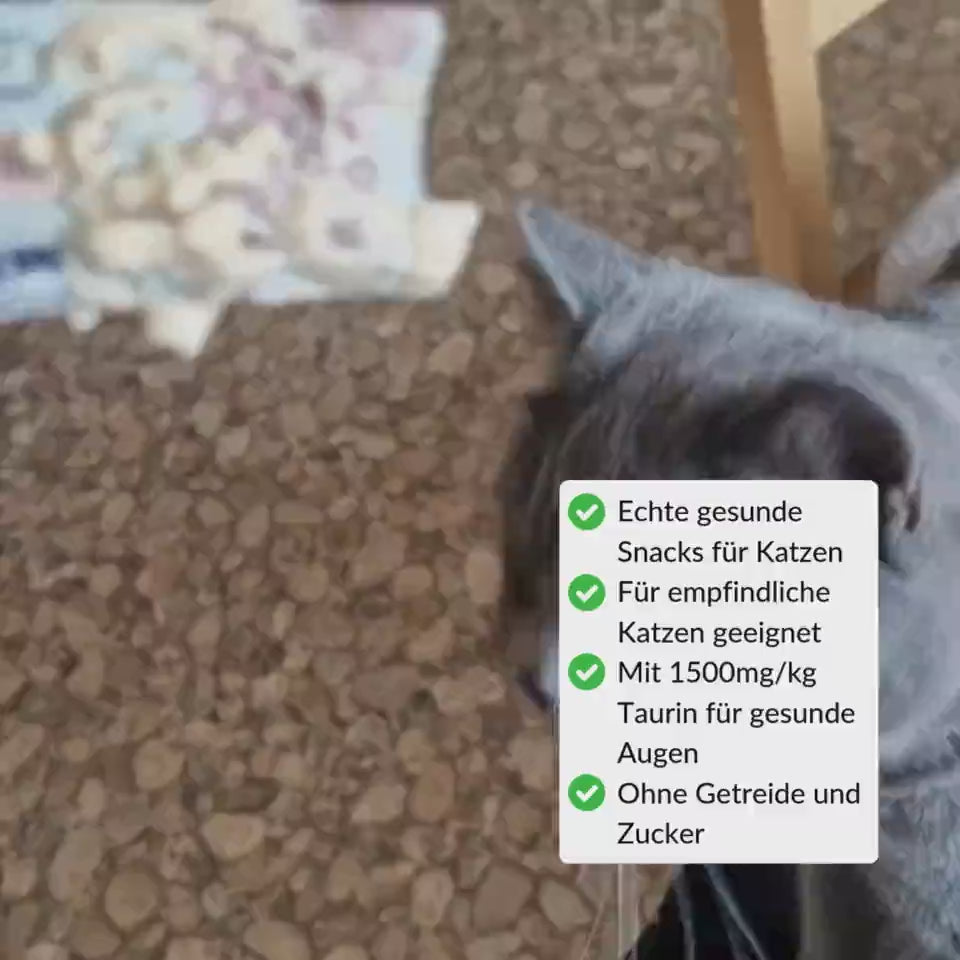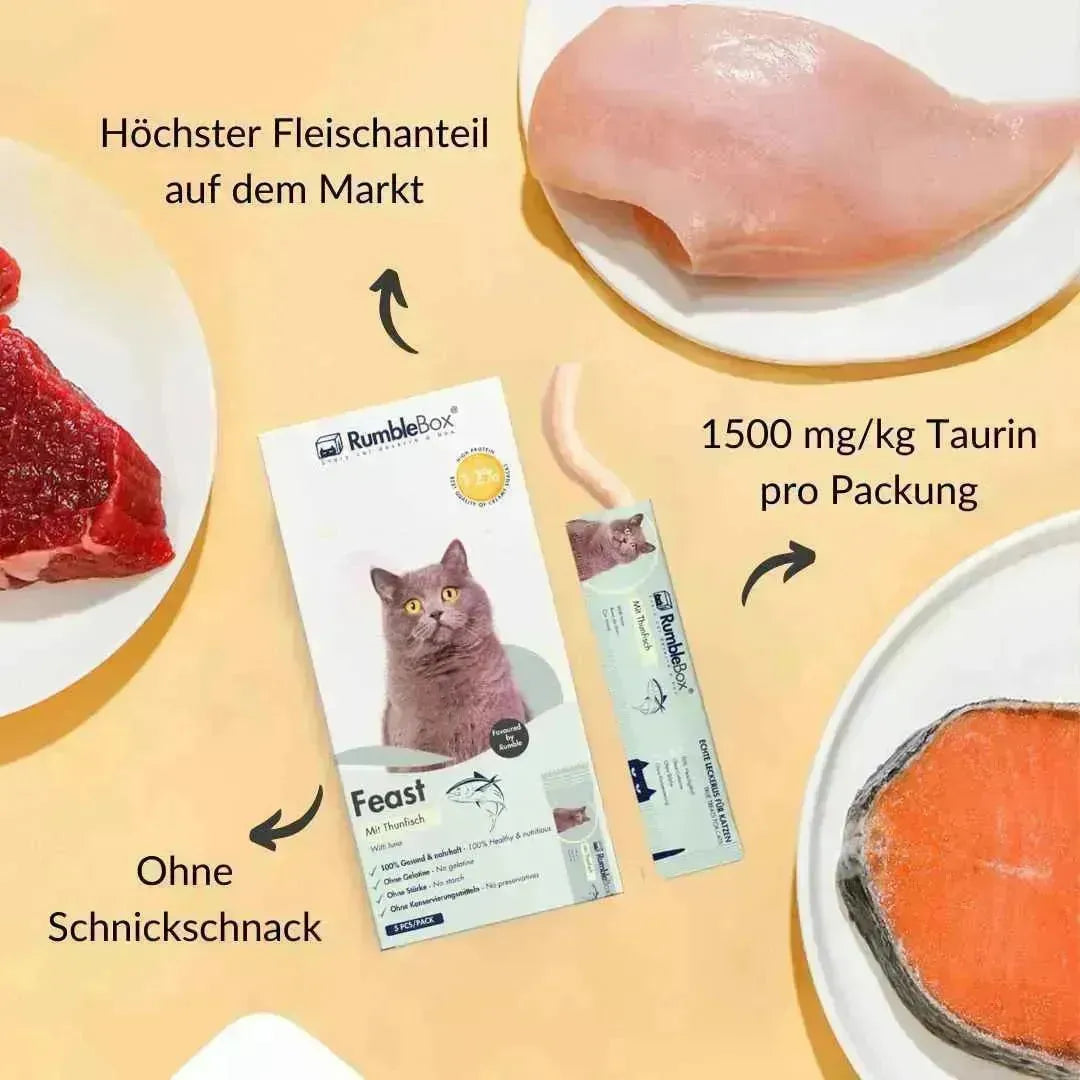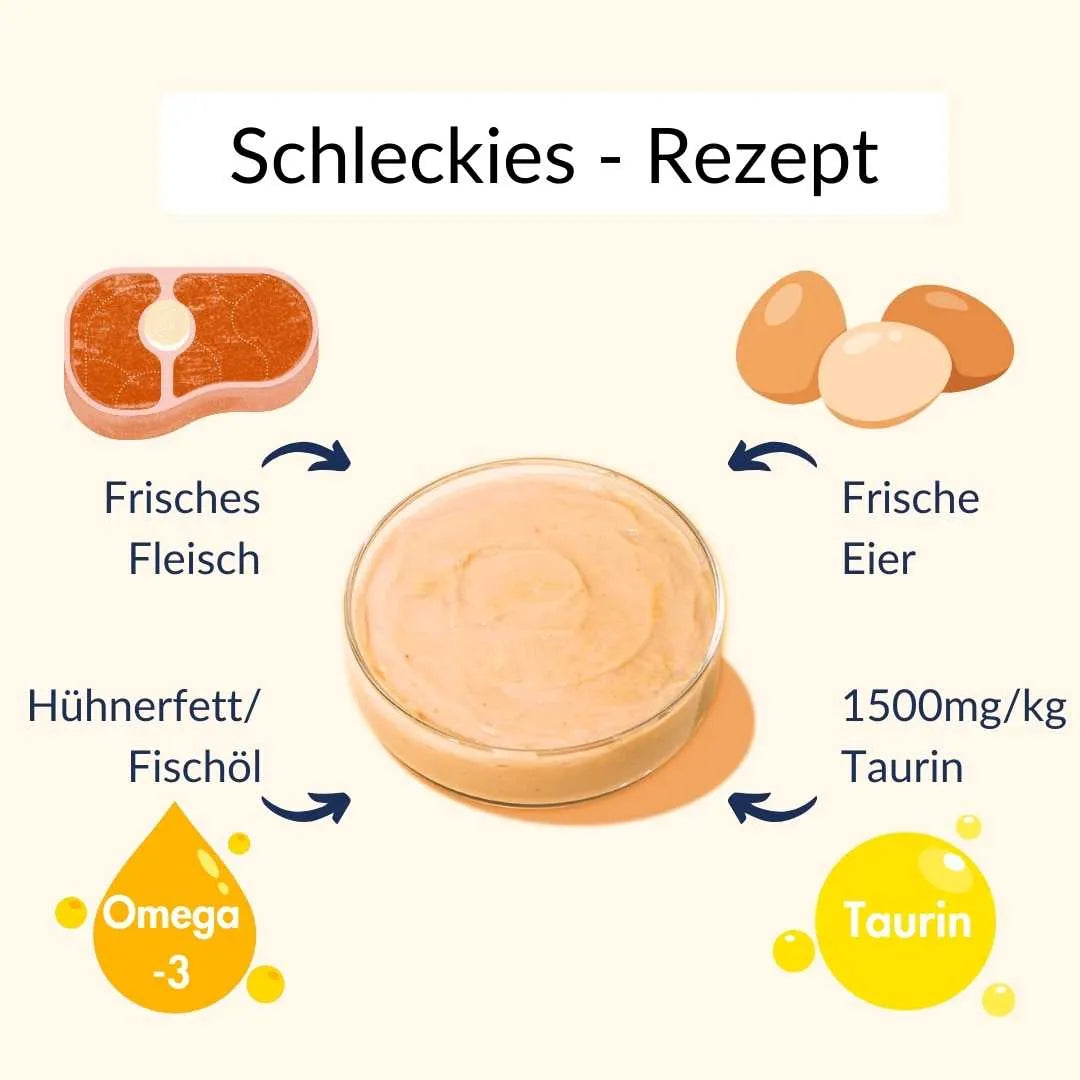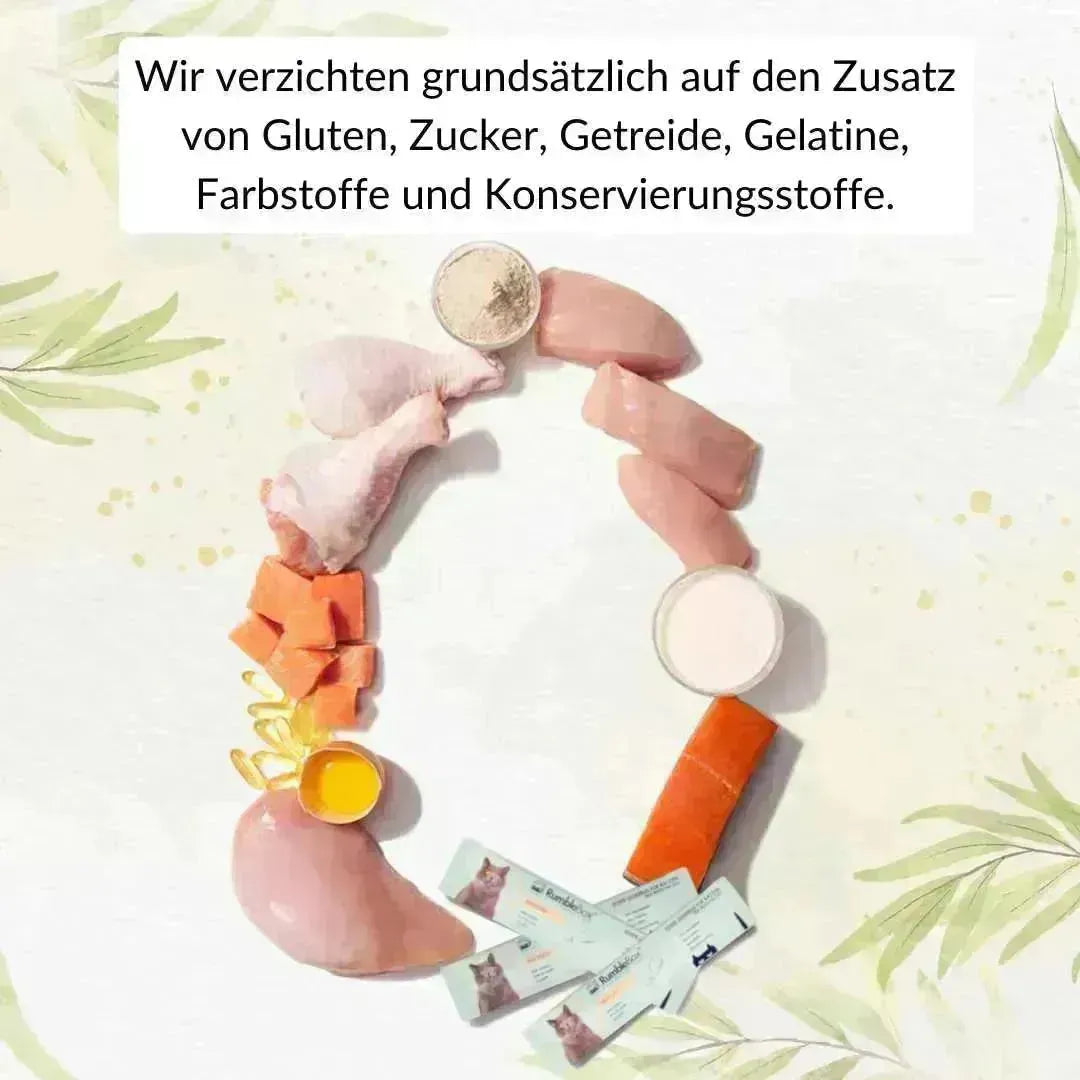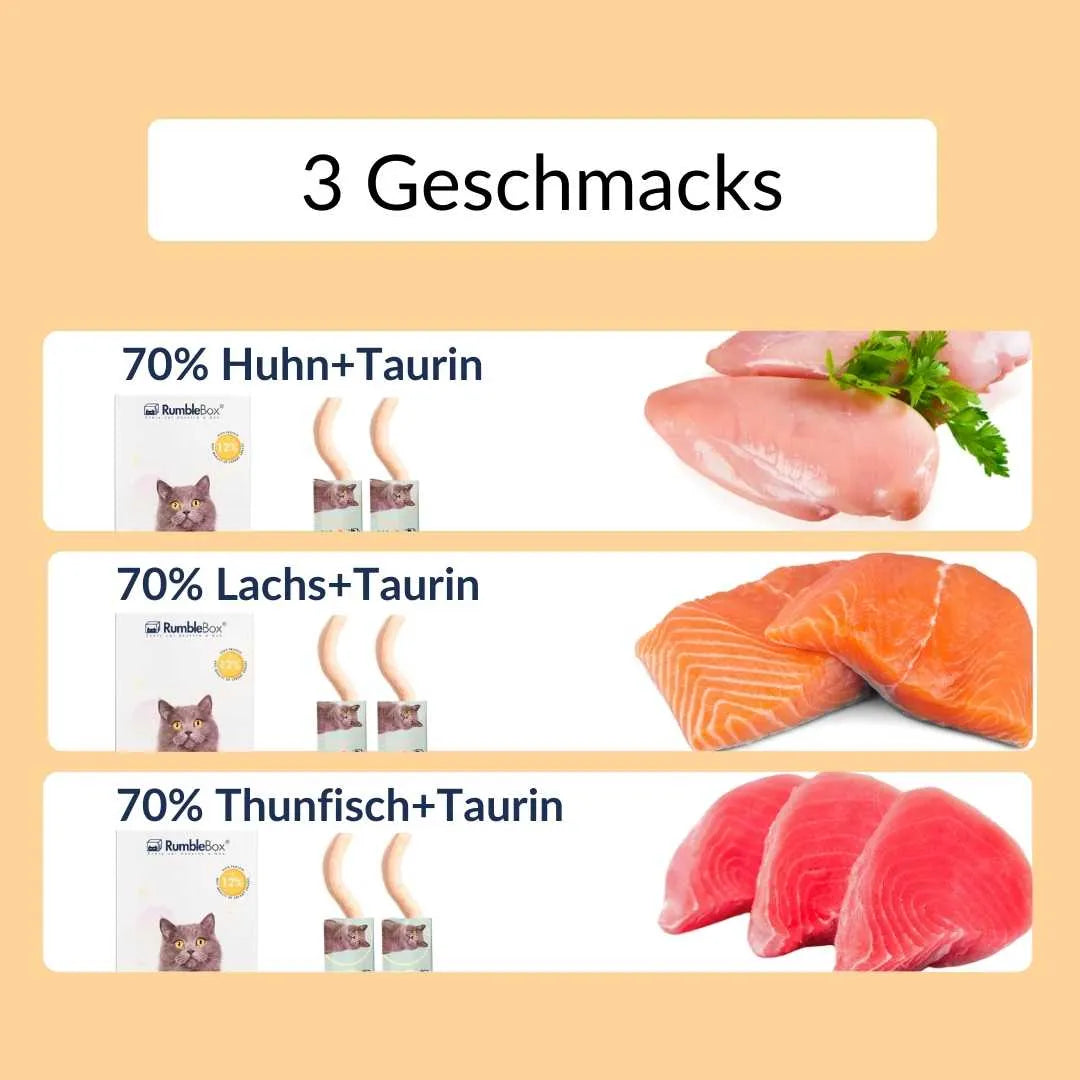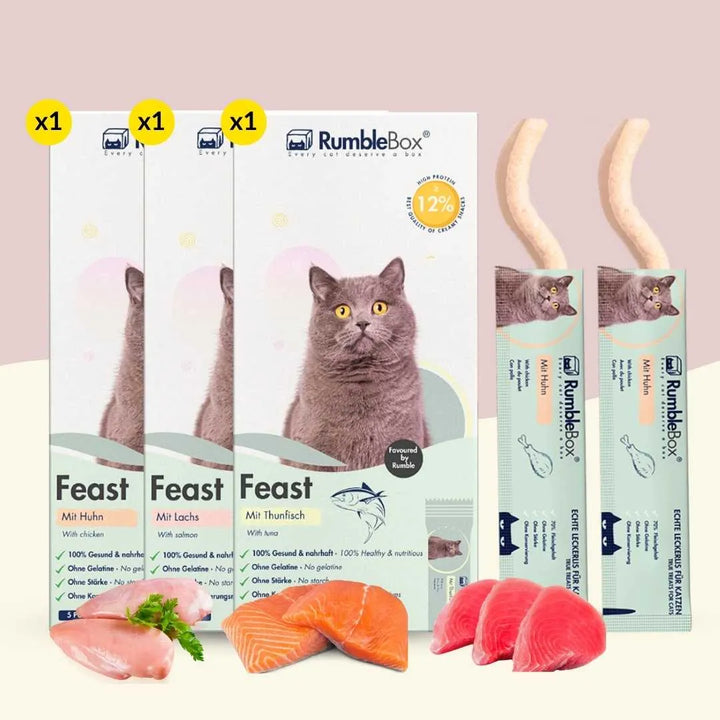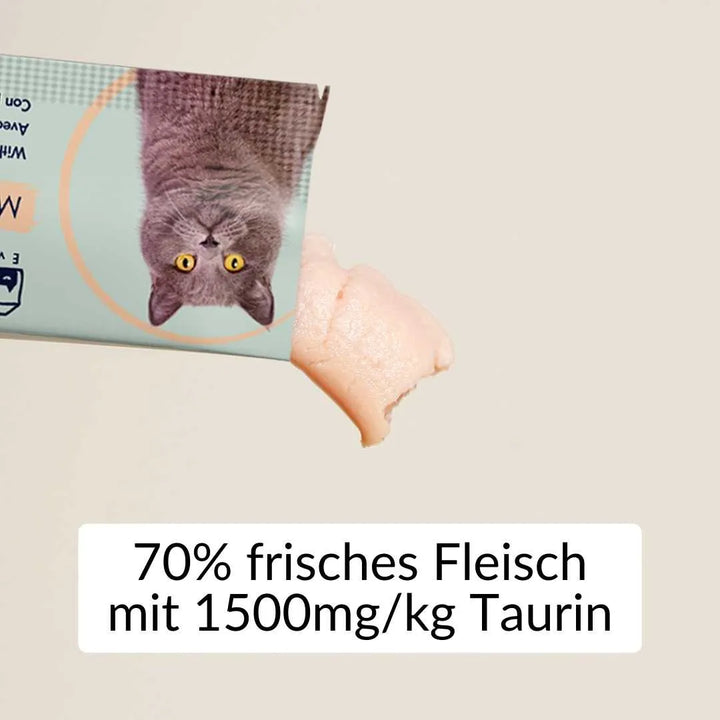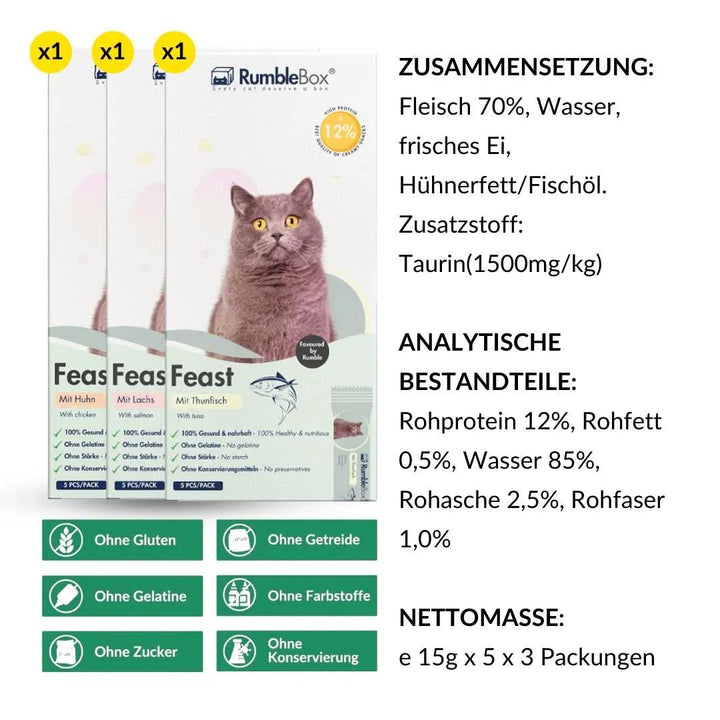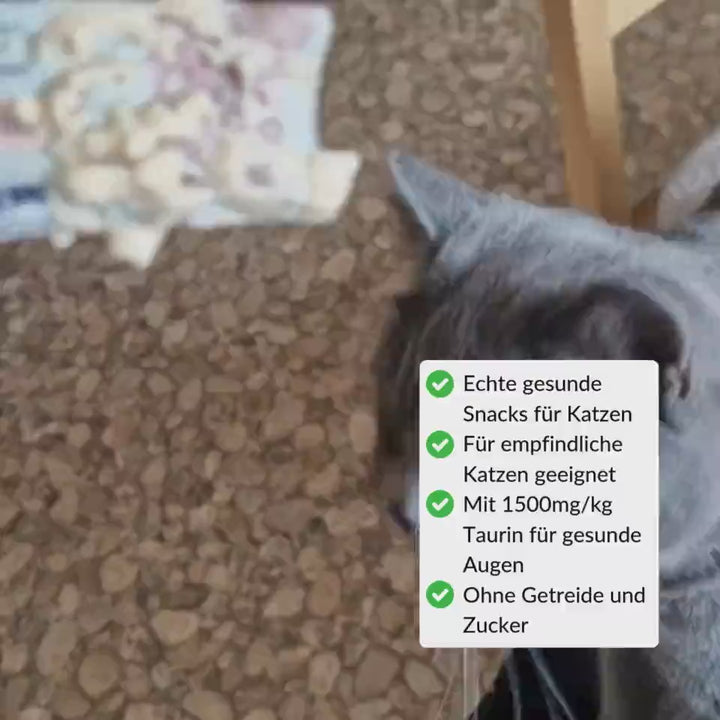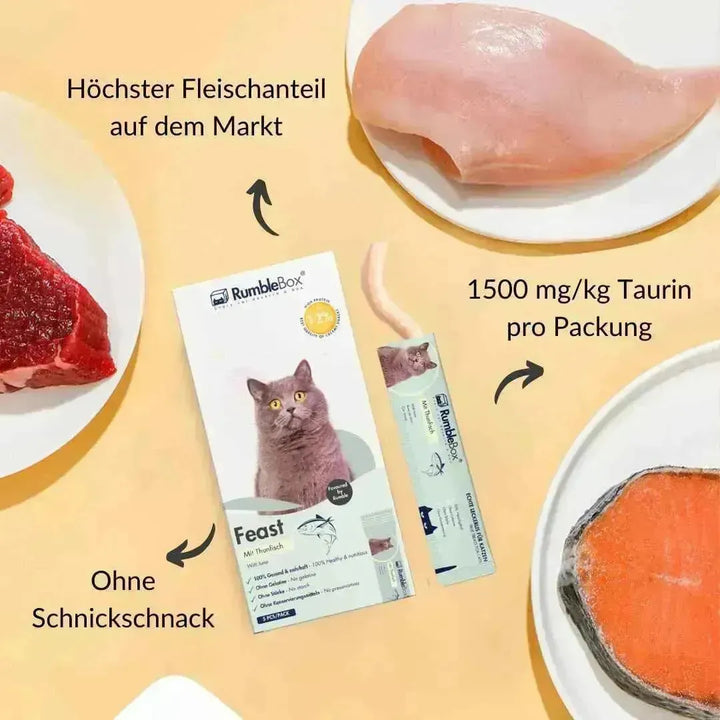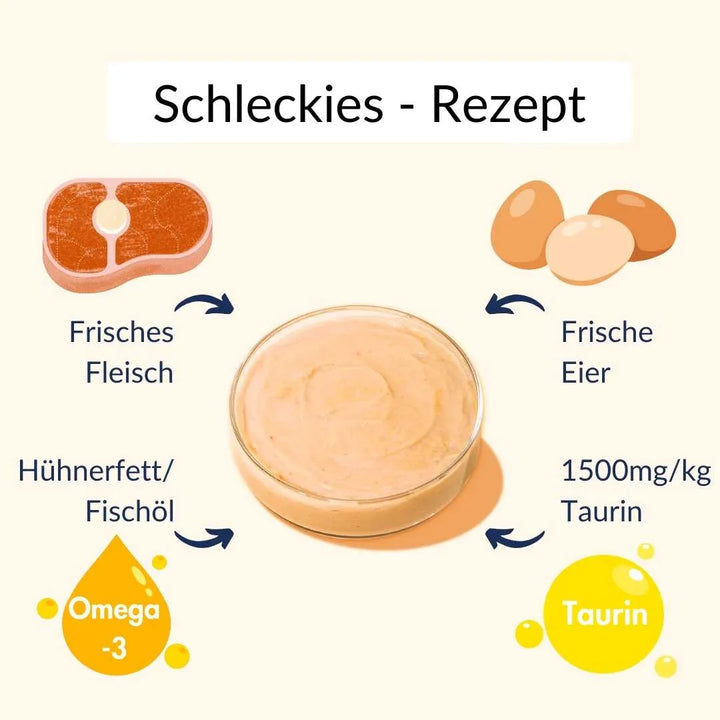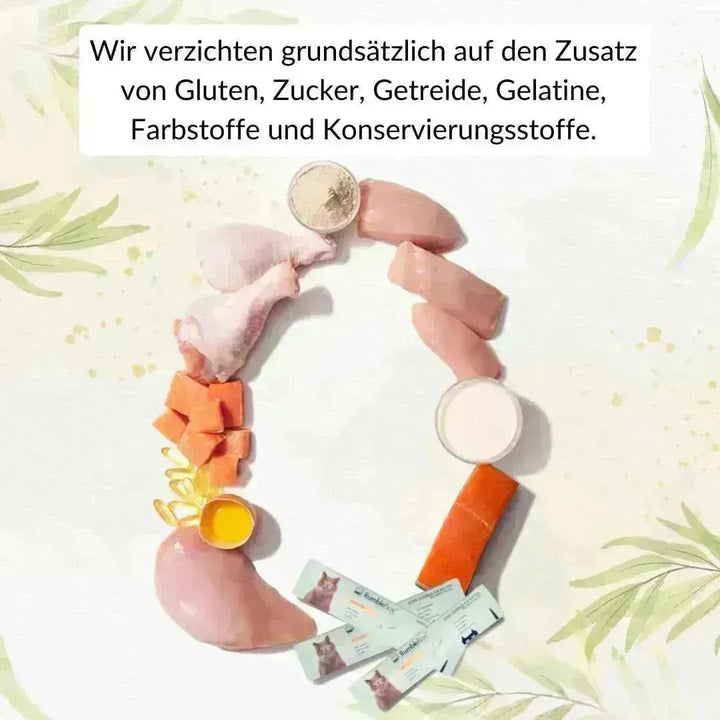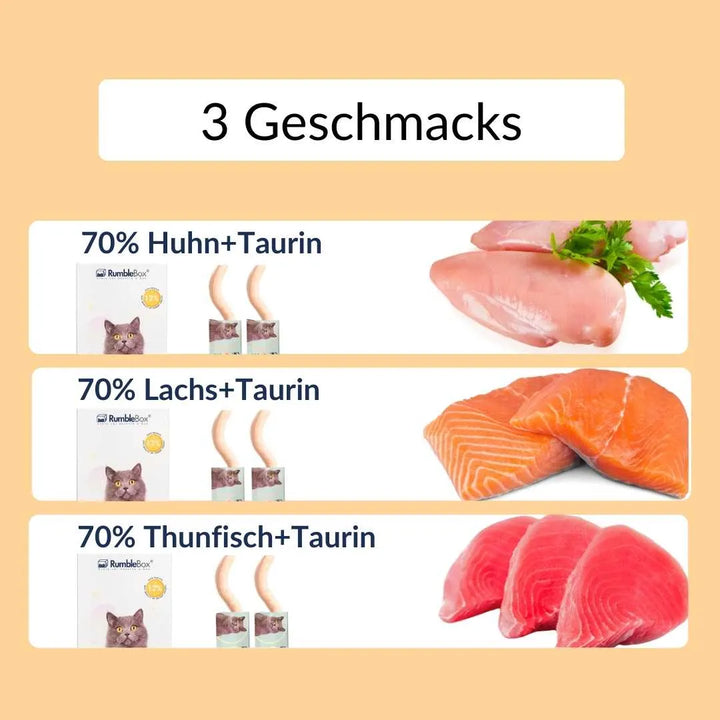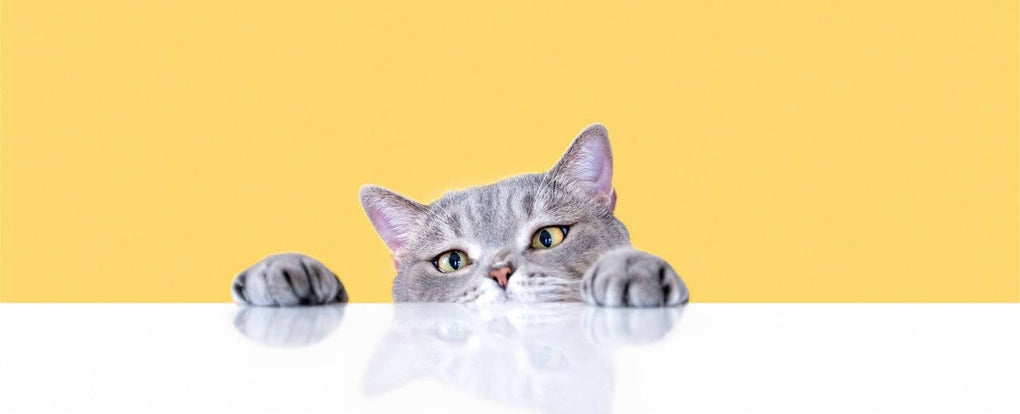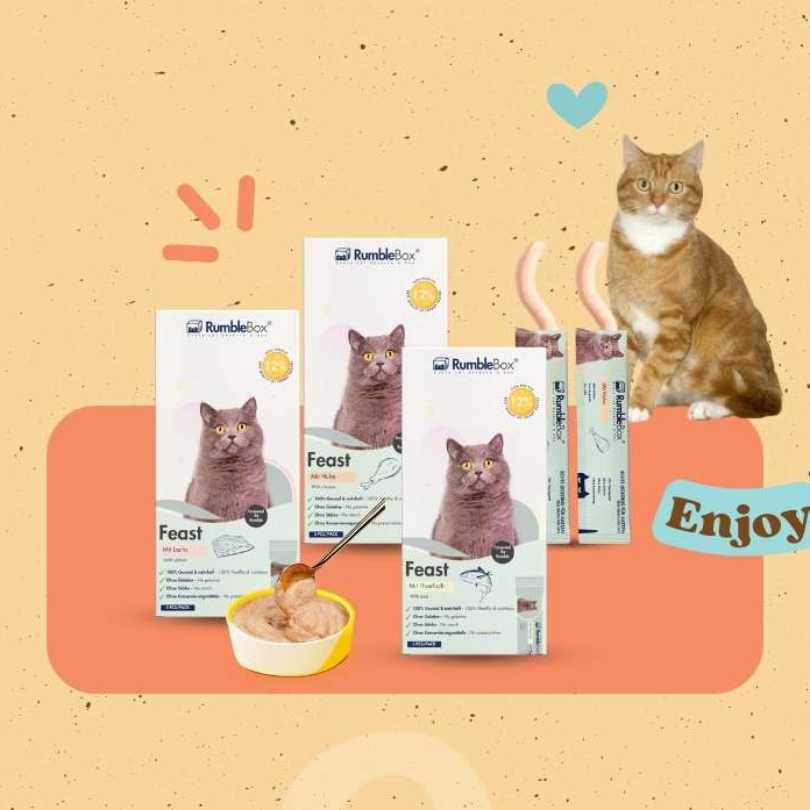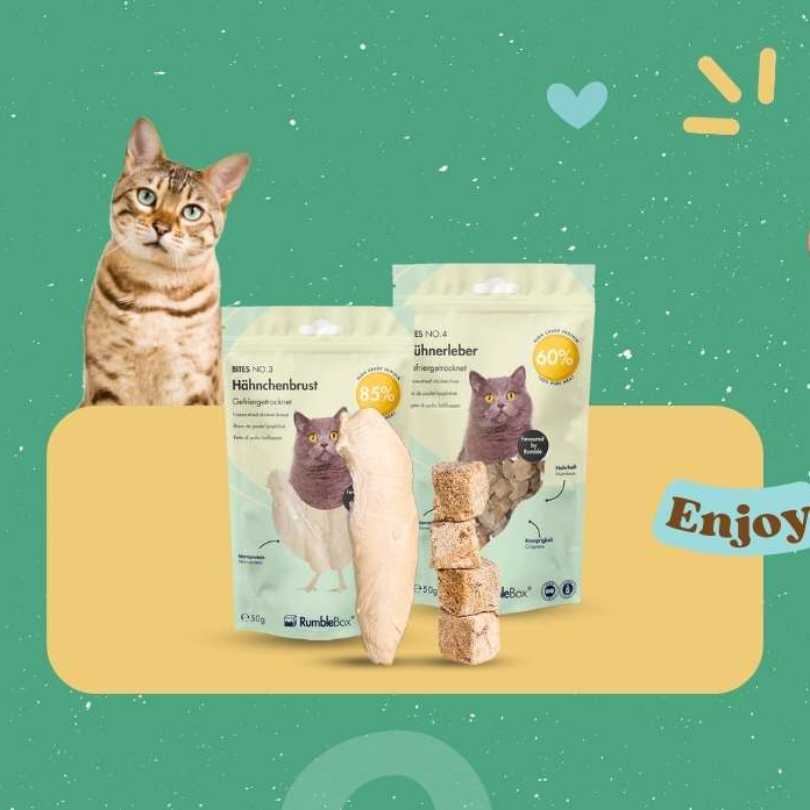Amount of food for cats: How much food does your cat need?
Important factors in the amount of food given to cats
There is no set number for the amount of food cats should receive, as many different factors come into play. For example, the cat's age , weight , activity level and so on. Below we will take a closer look at all of this.
Age-appropriate food amount for cats
Cats age very differently than humans. The following table shows the conversion between cat and human age .

Cats under one year of age are generally referred to as young cats . They need more food because they are in a phase of rapid growth of their bones, brains and all organs.
Another example of increased nutrient requirements is during pregnancy . After all, the cat needs to build up energy for childbirth and breastfeeding. Compared to kittens and pregnant cats, the energy expenditure of adult cats is usually more stable.
Of course, cats' metabolism can slow down with age. The diet and frequency of meals must be adjusted to avoid obesity and other health problems.
Once cats reach the age of eight, they enter the senior phase . Their digestive and metabolic abilities slowly decline and they require high-quality food that is easier to digest .
amount of food depending on the weight of the cat
Cats of different weights certainly have different energy needs. Veterinarians usually use a special indicator called a body condition score when determining a cat's weight . This allows them to find out what the cat's body structure looks like by looking at, touching, and pressing on the spine and ribs. We recommend weighing young cats weekly and adult cats monthly.
 Cats that are too thin :
Cats that are too thin :
- weak immune system
- muscle atrophy
- osteoporosis
- hormonal disorders
Cats that are too fat:
- heart and joint diseases
- Less mobile
- Higher risk of diabetes
amount of food appropriate to the activity level
A cat's activity level depends on a number of factors, including its breed , personality, whether it is neutered and its general health. Looking at the different breeds, Bengal and Abyssinian cats , for example, are very active , while Persians and Scottish Folds are more laid-back types.
Of course, every cat has its own character . Even within a breed there are differences in how active they are. After castration , the metabolism slows down. The hormonal changes often make cats calmer than before .
As a cat owner, you can easily observe how often your cat runs, jumps and plays. Such active cats need more energy and should therefore be given more food to meet their energy needs.
How many calories does a cat have?
A cat's daily calorie needs can be calculated using a simple formula. First, a cat's resting energy needs are calculated based on its weight and then multiplied by a coefficient appropriate to the cat's condition to determine the cat's daily calorie needs.

The formula for calculating resting energy requirement (RER) is:
RER(kcal/day) = 70×(body weight in kg)×0.75
For example, the resting energy requirement of a 5 kg cat is:
RER = 70×(5)×0.75 = 234(kcal/day)
This means that the cat needs about 234 kilocalories of energy per day when it is completely at rest .
Adjustment of energy requirements:
Depending on the cat's age, weight and activity level, we can adjust the RER value accordingly to calculate their total energy requirement (TDEE). Common adjustment factors are as follows:
| Non-neutered adult cat | 1.4 x RER |
| neutered cat | 1.2 x RER |
| Active adult cat | 1.6 x RER |
| Obese cat | 1.0 x RER |
| Growing kittens | 2.5 x RER |
| Pregnant cat | 1.6 - 2.0 x RER |
| Lactating cat | 2.0 - 6.0 x RER |
Example calculation:
Assuming an adult, very active cat weighs 5 kg , its TDEE can be calculated as follows:
TDEE = RER x activity factor = 234 * 1.6 = 374
This means that this active cat needs about 374 kilocalories of energy per day.
Daily food amount for cats - snacks
Snacks are a special highlight for cats - they bring fun into everyday life. However, remember that they should not make up more than 10% -15% of the daily calorie intake. In my example, I deliberately use the conservative 10%. For example, if your cat needs 374 kcal per day , snacks should be limited to around 37 kcal .
For example, using this formula, Total Calories = (Protein (g) × 4) + (Fat (g) × 9) + (Carbohydrates (g) × 4) – we can see that a 50g bag of freeze dried chicken pieces contains about 19.7 kcal.
Make your own cat food quantity calculator
For all cat owners who want to prepare their own food, it is useful to know how to calculate the daily calorie intake for their cat. Homemade cat food has many advantages. Not only do you have more flexibility and can better control the nutritional content of the ingredients, but it is also fun!
Thank you for reading this far – it really means a lot to us! We hope you found something useful and maybe your cat is already looking forward to a little something extra. See you soon and lots of purrs!
By the way
Many cat owners pay close attention to the ingredients in their cat's main food , but often forget about treats .
Snacks often contain sugar, grains and artificial additives that can be harmful to health in the long run.
Anyone who truly wants to feed their cat a completely healthy diet should also rely on natural ingredients here:
Hypoallergenic treats without additives – naturally from RumbleBox. Perfect as a reward, during training, or simply as a snack.
Over 2,500 cats have already switched to healthy snacks!
💚


